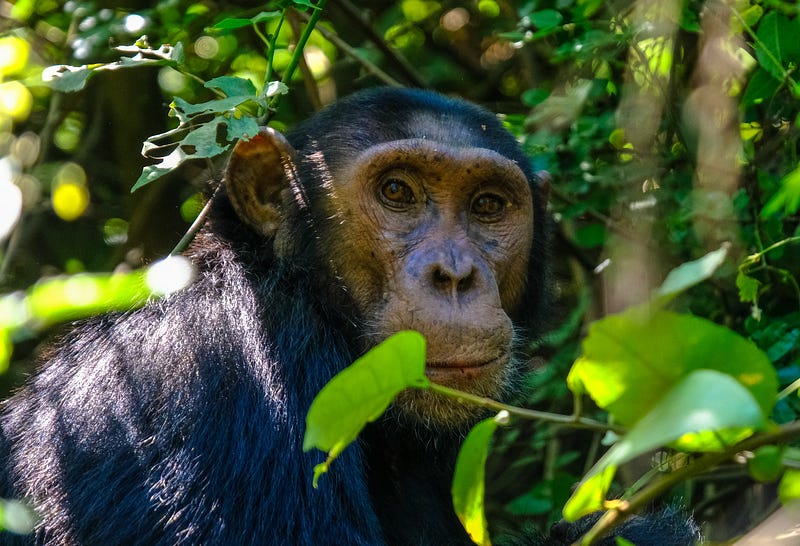Exploring Animal Intelligence: Self-Medication in the Animal Kingdom
Written on
Chapter 1: A Journey into Animal Self-Medication
My fascination with animal intelligence has deepened significantly after delving into the remarkable behaviors of various species. A recent newsletter I wrote focused on elephants, inspired by the enlightening book The Elephant Whisperer by Lawrence Anthony and Graham Spence. This read not only highlighted the cool traits of elephants but also unveiled their ability to self-medicate, particularly during pregnancy to induce labor. This intriguing idea prompted me to explore other animals that exhibit similar self-healing behaviors, leading to astonishing revelations about their intelligence and our connection with them.
As Albert Einstein famously noted, “Everybody is a genius, but if you judge a fish by its ability to climb a tree, it will live its whole life believing it is stupid.” This statement underscores the importance of recognizing diverse forms of intelligence, a lesson that applies to both humans and animals.
Section 1.1: The Broad Spectrum of Animal Intelligence
In the quest to understand animal intelligence, we often overlook the complexities that lie within. While no other species has constructed intricate societies like ours, it is evident that animals possess a level of awareness that challenges our assumptions.
Subsection 1.1.1: Evidence of Self-Medication
Many animals, including elephants, are known to engage in self-medication, as documented by the National Academy of Sciences. Various species, from mammals to birds, have shown this remarkable behavior, primarily for combating parasites or enhancing reproductive health.

American biologist Michael Huffman first observed chimpanzees self-medicating in 1996 while researching them at the Primate Research Institute in Kyoto, Japan. He noticed a constipated chimp consuming leaves from an unusual, toxic plant. Remarkably, the next day, the chimp was back to normal.
Huffman identified four criteria to define self-medication in animals, as highlighted by the PNAS:
- The plant consumed must not typically be part of the animal's diet; it is medicinal, not nutritional.
- The plant should offer minimal or no nutritional benefits.
- Consumption should coincide with times of high parasite activity, such as the rainy season.
- The behavior should be unique to the individual, with others in the group not participating.
Section 1.2: Instinct Versus Learned Behavior
This emerging understanding of self-medication prompts questions about how animals determine which plants to use. Is it instinctual, or do they learn from experience?
While some animals may rely on instinct—like honeybees using resin to ward off bacteria—others, such as sparrows that utilize cigarette butts to deter mites, likely learn these behaviors over time. The knowledge transfer among animals remains an area ripe for exploration.
Chapter 2: Chimpanzees and Innovative Healing Techniques
Recent studies reveal that chimpanzees have advanced their self-medication techniques by using insects for wound healing. Researchers led by Simone Pika and Tobias Deschner observed chimpanzees in Loango National Park, Gabon, applying winged insects to their wounds on multiple occasions over 15 months.
This behavior is significant for two reasons. Firstly, chimpanzees are not just consuming other species for nourishment but also employing them in a medicinal capacity. Secondly, they have been observed treating the wounds of their peers, suggesting a form of altruism that challenges previously held notions about chimpanzee behavior.
As Pika shared with the Smithsonian, “This is, for me, especially breathtaking because so many people doubt prosocial abilities in other animals. Suddenly we have a species where we really see individuals caring for others.”
Final Thoughts: Reevaluating Our Perception of Animals
The idea that humans reign supreme over other species is increasingly being questioned as research uncovers the depths of animal intelligence and emotional capacity. Evidence suggests that early humans may have learned medicinal plant knowledge by observing animal behavior.
When we strip away our societal constructs and examine our existence more closely, we realize that our differences from the animal kingdom may not be as vast as we once believed.
Katrina Paulson writes insightful essays on cultural topics and life experiences. She is the creator of two newsletters: the FREE Curious Adventure Newsletter and the more in-depth Curious Life, both of which delve into life's mysteries and perspectives. Support her work by subscribing to Medium for access to her articles and those of various respected writers.